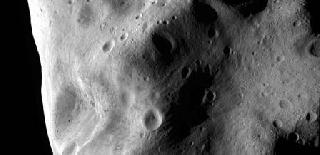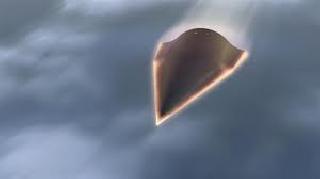
Asteroid Lutetia. An ESO photo.
PARIS (BNS): Asteroid Lutetia is a leftover fragment of the same original material that formed the Earth, Venus and Mercury, according to a new research.
A team of astronomers from French and North American universities who studied the unusual asteroid Lutetia said the properties of the asteroid closely match those of a rare kind of meteorites found on Earth.
The astronomers have combined data from ESA's Rosetta spacecraft, ESO's New Technology Telescope, and NASA telescopes to create the most complete spectrum of an asteroid ever assembled.
This spectrum of Lutetia was then compared with that of meteorites found on Earth that have been extensively studied in the laboratory and only one type of meteorite - enstatite chondrites - was found to have properties that matched Lutetia over the full range of colours.
Enstatite chondrites are thought to have formed close to the young Sun and to have been a major building block in the formation of the rocky planets, in particular the Earth, Venus and Mercury.
According to the study, Lutetia, which is about 100 kilometres across, did not originate in the main belt of asteroids, where it is now, but much closer to the Sun.
The asteroid may have been tossed out from the inner parts of the young Solar System if it passed close to one of the rocky planets and thus had its orbit dramatically altered and an encounter with the young Jupiter during its migration to its current orbit could also account for the huge change in Lutetia's orbit, it said.
"We think that such an ejection must have happened to Lutetia. It ended up as an interloper in the main asteroid belt and it has been preserved there for four billion years," said Pierre Vernazza (ESO), the lead author of the paper.
Earlier studies of its colour and surface properties have shown that Lutetia is a very unusual and rather mysterious member of the asteroid main belt. The new findings explain why Lutetia is different - it is a very rare survivor of the original material that formed the rocky planets.
"Lutetia seems to be the largest, and one of the very few, remnants of such material in the main asteroid belt. For this reason, asteroids like Lutetia represent ideal targets for future sample return missions. We could then study in detail the origin of the rocky planets, including our Earth," he said.
 Previous Article
Previous Article Next Article
Next Article











The Indian Air Force, in its flight trials evaluation report submitted before the Defence Ministry l..
view articleAn insight into the Medium Multi-Role Combat Aircraft competition...
view articleSky enthusiasts can now spot the International Space Station (ISS) commanded by Indian-American astr..
view article